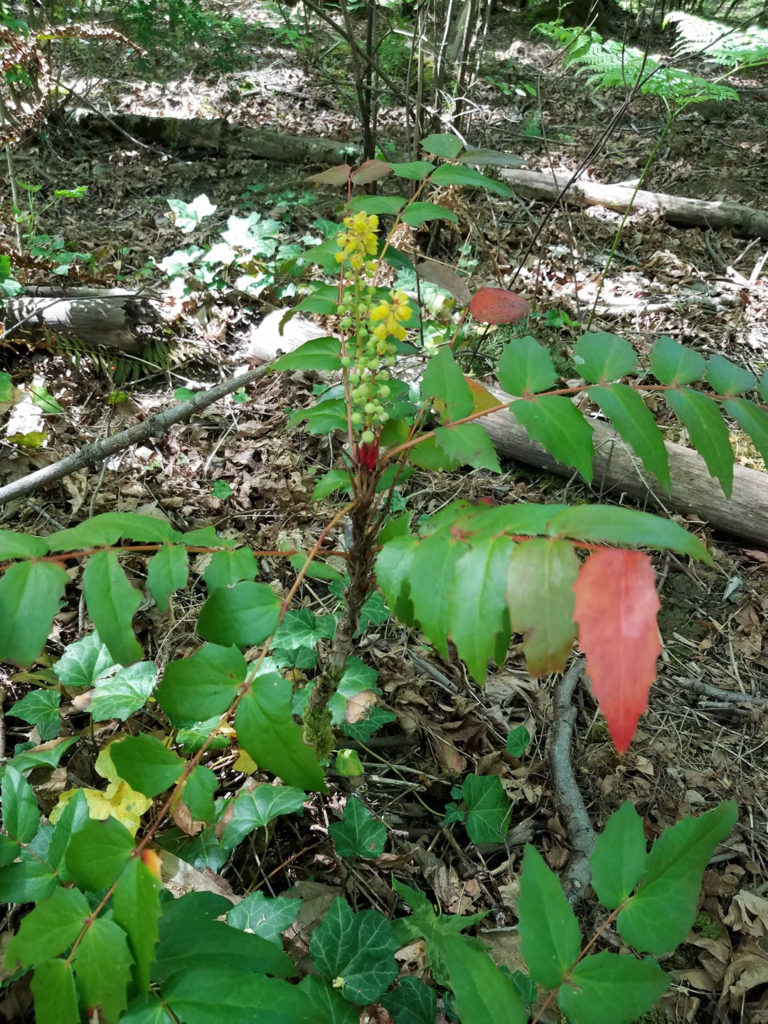

Low Oregon Grape, Mahonia nervosa
Berberidaceae – Barberry family
“Berberis” is derived from the Arabic name for one or more species in the Mediterranean area. The alternate generic name, “Mahonia” honors Bernard McMahon, a nineteenth century American horticulturalist. The elongated compound leaves of low Oregon Grape have 9 to 19 leaflets, with prominent veins. “Nervosa” probably refers to this prominent pattern of venation.
The Oregon state flower is the tall Oregon grape, Berberis aquifolium, with holly-like leaves (Latin for “holly” is “aquifolium”). Its tolerance for sun and heat make it a useful denizen in parking lot landscapes and other open areas. In contrast, the low (also cascade or mountain) Oregon grape forms an evergreen groundcover, of several inches to two feet in height, in the moderate to deep shade of a woodland. The leaves are dark green, glossy, and have small sharp spines along the margins. Older plants grow like palm trees, with foliage arising from the top of a vertical stem marked by leaf scars. The yellow flowers are borne on long stalks, maturing into resolutely sour, blue fruits by fall. Not surprisingly, Erna Gunther notes that many Native groups regard the berries as too dry and sour to be good. However the bright yellow roots when boiled still have wide use as a source of yellow dye for basketry and mats. A tea made from boiled root was used as a general tonic, or to cure coughs by some Native groups (5-58).
Information courtesy of “The View From Springbrook Park; an Illustrated Natural History” by Ed Chinn.
Photos taken by Laura Tanz
Sponsored by Friends of Springbrook Park; Lake Oswego, OR